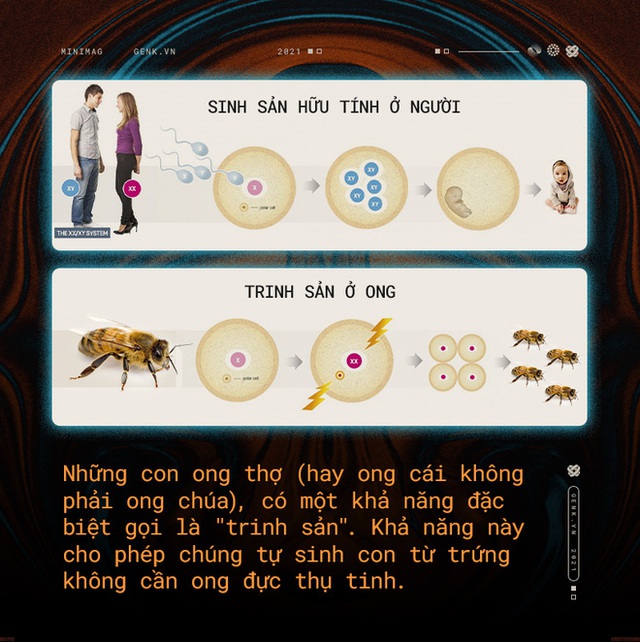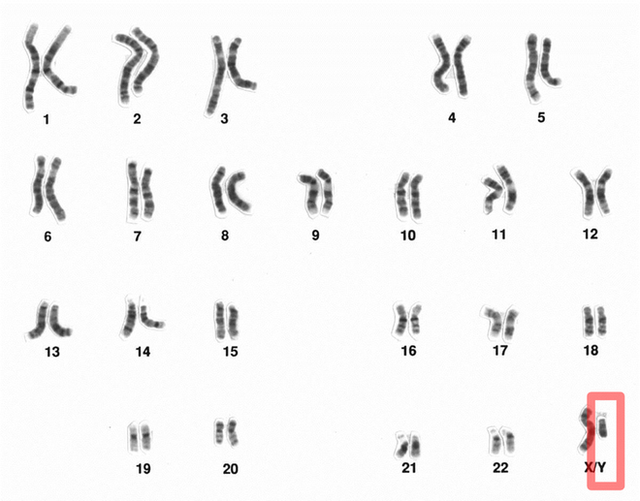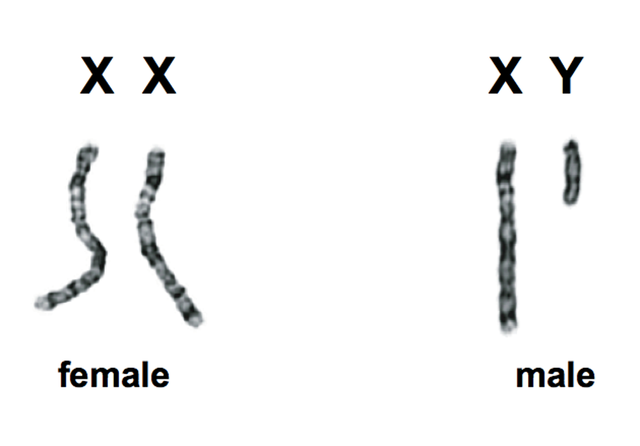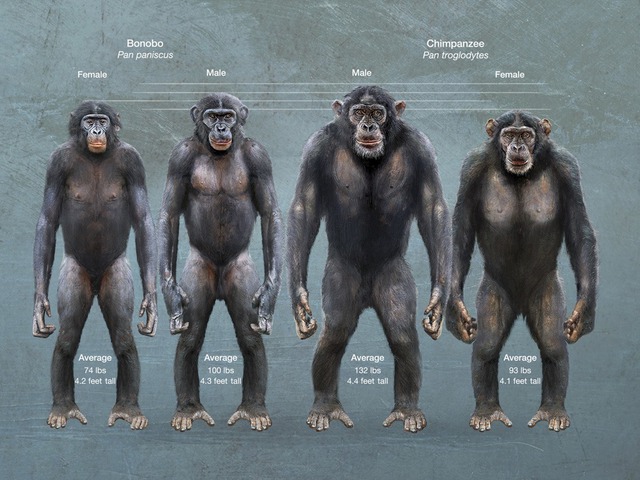It was an autumn afternoon in August, Jane Pearson was enjoying a camping trip in a forest in California with her husband and their 5-year-old son. Since they had managed to set up the tent before sunset, Jane decided to take a quick nap.
But like everyone who loses track of time upon waking, Jane had no idea how long her moment of rest had lasted. She only knew that when she woke up on the hammock outside their tent, her husband and son were no longer inside.
At first, Jane thought they had gone somewhere to explore the forest. But when they didn’t return for dinner, she sensed that something was wrong. She waited and searched desperately before deciding to head down the mountain to seek help.
But it was at that moment when Jane stepped back into the world that she realized a horrifying truth: Not only had her husband and son disappeared, but all men, those carrying the Y chromosome on Earth, had vanished—meaning both fetuses in wombs and transgender men as well.
Everything happened in just a moment, when Jane dozed off in her hammock outside her tent.

This is the introduction to “The Men,” the newly published novel by American author Sandra Newman. The story follows Jane Pearson as she explores how the world operates when all men suddenly disappear.
Certainly, everything fell into a state of chaos. Women had to learn how to take over all the jobs that men had left behind, from electricians, sanitation workers, firefighters, pilots, to business leaders and political operators.
The pain of losing loved ones was always present and haunted the women left behind. But time also gradually proved that it was not enough to hold them back from moving toward a brighter future.
“For a moment, I was overwhelmed by the thought of a world without men. The feeling was sweet and miraculous: It was a world of only lambs with no wolves around,” Jane thought.
From now on, women like her would no longer need to carry pepper spray at night. They also wouldn’t have to fear their abusive husbands at home. Violence and war disappeared along with the aggressive genes associated with the Y chromosome.
A world without men would become peaceful and prosperous. Women would still be able to develop reproductive technology, allowing them to create their own children.
Therefore, the disappearance of all men does not mean the end of humanity. But would that world be better as Jane thinks it would?

A unisexual, parthenogenetic world is theoretically possible
In the summer of 1962, in Hillston, Australia, renowned British geneticist and evolutionary biologist Michael White was also on a camping trip with his young son.
His son, Nichonas, caught a bunch of grasshoppers. At first, White didn’t pay much attention to them, but when Nichonas began asking his father, “Are these grasshoppers male or female?”, White suddenly realized that they were all female grasshoppers.
He stepped out of his tent and conducted a small survey, enough to notice that the entire field in Hillston was filled with female grasshoppers. These green grasshoppers belonged to the species Warramaba virgo, a hybrid of the grasshoppers Warramaba whitei and Warramaba flavolineata, and had existed for at least 250,000 years.
W. virgo grasshoppers typically live in the arid desert regions of southern Australia, where they feed on mulberry trees and other shrubs during the summer. Both parent species, W. whitei and W. flavolineata, reproduce sexually, meaning they have both male and female offspring.
However, by the time of W. virgo, this species had become parthenogenetic, meaning they only have females without any males.

As its name suggests, parthenogenesis (Parthenogenesis) is a form of asexual reproduction in which the embryo of a species can grow and develop without the need for fertilization by sperm.
To reproduce parthenogenetically, females of a parthenogenetic species will copy their chromosomes into four copies. Next, they take genetic material from these four chromosomes, mixing it to create four chromosomes with mixed DNA through a process known as recombination.
This shuffling or genetic restructuring ensures that their offspring will differ from their mother, not being a 1:1 copy. However, because the chromosomes from unfertilized eggs contain no new genetic material from a male, they will be identical in pairs.
Previously, scientists believed that parthenogenesis was a form of reproduction that contradicted evolution. Because recombination does not occur, it could reduce a third of the genetic diversity in each generation, similar to inbreeding.
Therefore, within just a few generations, the genetic diversity of parthenogenetic species would be so low that their offspring would not be strong enough to reach adulthood. As a result, the next generation would not be born, and the parthenogenetic species would go extinct.
However, reality shows that parthenogenetic species can evolve in various ways to eliminate this disadvantage.
For example, in a study last year, scientists at the University of Sydney discovered a species of honeybee in South Africa that has the ability to mutate, allowing it to lay genetically heterozygous eggs with all the genetic material from its four chromosomes.
In other words, they do not eliminate any of those chromosomes, thus preventing the loss of genetic diversity across generations.

The green grasshoppers W. virgo in Australia are similar; they have survived for at least 250,000 years due to the genetic diversity promoted by repeated hybridizations between the two parent species. This can create an army of different asexual lines in a phenomenon known as “hybrid vigor“.
For instance, when hybridizing a horse and a donkey, you get a mule that has greater strength and endurance than both parent species. But unlike mules, which cannot reproduce, W. virgo grasshoppers can still parthenogenetically produce offspring.
Many species of roundworms, tardigrades, bees, some fish, amphibians, and reptiles in the wild also choose this form of reproduction. Last year, scientists even discovered that female vultures housed in the San Diego Zoo were reproducing without the need for a male.
The Y chromosome in humans is also gradually disappearing
Returning to the disappearance of all men on Earth in “The Men,” everything happened as if there was a snap from Thanos. Or perhaps a woman betrayed, found a magic lamp, and wished for a world without men.
In reality, that scenario is unlikely to occur if science holds its ground against miracles. But it also doesn’t mean that all men on Earth cannot disappear. Evolution could also perform its own snap. The only difference is that from the time that snap is made until all men in the world go extinct could take millions of years.
This is inferred from scientists’ findings while observing the Y chromosome in humans, which they noticed is shrinking.

Going back 166 million years, when the first mammals emerged, they carried an “original” Y chromosome that was the same size as the X chromosome. These two sex chromosomes also shared identical genes.
However, the Y chromosome has a fundamental flaw. Unlike all other chromosomes that have two copies in each of our cells, the Y chromosome has only one copy, passed from father to son.
This means that genes on the Y chromosome cannot be recombined, the “shuffling” of genes that occurs in each generation helps eliminate harmful gene mutations. Without the ability to recombine, genes on the Y chromosome degenerate over time, causing its size to shrink.
Now when you look at the XY chromosome pair in men compared to the XX of women, you will see one side has shrunk significantly. And this degeneration hasn’t even stopped. Scientists predict that at the current rate of gene loss, in about 4.6 million years, the human Y chromosome will completely disappear.

The good news is that while the Y chromosome is necessary for our normal reproduction, many genes it carries actually do nothing in the body. They can easily be replaced using reproductive assistance techniques on women’s bodies.
This means that genetic techniques could replace the functions of the Y chromosome genes, allowing women to reproduce without needing men. Science could choose parthenogenesis or even recombine X chromosomes with each other.
In Japan, scientists successfully converted stem cells from a female mouse into sperm cells. These sperm cells later helped another female mouse become pregnant.
If this technology could be perfected for humans, children could be born from two mothers. Traditional family models could still be maintained if they use this form of reproduction. And it could even offer some evolutionary advantages.

Asexual reproduction would eliminate what scientists call “evolutionary waste.” In this, a parthenogenetic species has 100% of its individuals capable of producing offspring, compared to only 50% if they reproduce by male and female.
Parthenogenesis would also eliminate sexual intercourse, removing the so-called “two-fold cost of sex.” Animals would not have to waste energy and time searching for a mating partner or expending calories on sexual activities.
In fact, during the mating of two heterozygous animals, they also often have a higher risk of being attacked by predators.
Therefore, scientists would not be surprised if species could evolve to eliminate sex and gender for reproduction. They just wonder why there aren’t more parthenogenetic species in the world, including humans?
But would a world without men be better?
The idea that a world without men would be more peaceful and prosperous is linked to a hypothesis known as “The Bonobo Thesis.”
We know that bonobos are pygmy chimpanzees living in Congo, sharing up to 99% of DNA with humans and are one of our closest living relatives along with chimpanzees.
The only difference is that bonobos organize their societies matrilineally. And the fact that female bonobos lead their groups has reduced rates of violence. Wars over power, food, offspring, and territory occur less frequently compared to normal chimpanzee groups.

So, if we apply the Bonobo hypothesis, it seems that a planet made up only of women would become more stable and peaceful. There would be no wars if women led the world. The armies of most countries would be reduced to just 1/10 if men disappeared (except for North Korea, where about 40% of soldiers are female).
However, the Bonobo hypothesis only holds true if the aggressive tendencies of animal species are heavily tied to male genes. If violence is a product of culture and environment, the disappearance of males would be meaningless.
In reality, when scientists observe bonobos, they find that they rarely attack individuals of their own group. But when two groups of bonobos meet, they can still engage in fierce fights.
In “The Men,” female novelist Sandra Newman also anticipated this scenario. The women in her world do not always live peacefully like sheep. When their food runs out, they still resort to raiding and violence.
Therefore, it’s hard to say that the women in their own world would just be diligent and gentle homemakers, lacking the toughness or political ambition to start wars.

Ultimately, don’t forget that we’re not just swapping black presidential chairs for pink ones. In a world with only women left, they would have to take on all the jobs that men left behind.
What would happen when only 4 out of 100 current firefighters are women? The fire season would become worse. Among all the pilots and aerospace engineers in the world, only 5.2% are women. Flights would therefore become rarer and more expensive.
Surgeons are in a similar situation, with only 4 out of 10 being women. Therefore, you might have to wait longer for your surgery schedule. The good news is that there would be more nurses and caregivers, which would benefit your post-operative phase.
But the biggest barrier that the world must overcome turns out to be in our farming workforce. Currently, only 1 out of 4 farmers on Earth is a woman. Food would then become scarcer and more expensive.
And this would lead us back to the food raids in Newman’s novel, where groups of women block food distribution trucks.

In summary, a world without men is entirely theoretically possible, whether as a consequence of an evolutionary snap or Thanos. In both scenarios, women would find ways to survive and reproduce in a unisexual world.
They could transition from sexual reproduction to parthenogenesis over a process lasting millions of years or use reproductive assistance technologies to create offspring without sperm or men’s contributions.
But to say that world would be better without men is still uncertain.
Summary